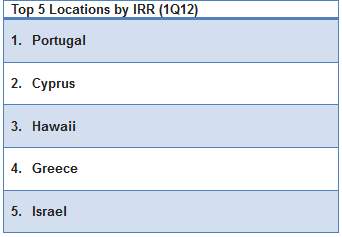 One of my big predictions is that “crossover,” the point at which solar energy becomes the cheap energy, will be achieved around 2016.
One of my big predictions is that “crossover,” the point at which solar energy becomes the cheap energy, will be achieved around 2016.
What I may have failed to mention is that's a moving target, not so much in time as in place.
There are multiple variables, and not all are within the industry's control. Yield, production cost, installation cost and channel cost can be controlled, but many other factors can't be:
-
Expected production will vary depending on where a panel is placed, on the intensity and regularity of heat and light striking it.
-
The value of that production will depend on the cost of local grid energy, on the price of the alternative.
-
The value of that production will depend, in part, on the local grid itself. How far away are the customers, how efficient is the grid at handling inflows. Is there a grid?
-
Government policies can impact value in two ways. Subsidies like feed-in tariffs can improve the outlook, taxes can reduce it. In the U.S. this means the environment can vary from state to state and town to town.
(Image from Lux Research.)
In places like Africa, in much of India and the rest of the developing world, where there is no grid, the cost of the panel, its installation, and its maintenance are all you need to consider. In the U.S. there is a wide variety in the price currently paid for grid energy depending on where you are – New Jersey has already achieve crossover while Georgia is years away because New Jersey charges more for electricity, due in part to past controversies on siting power plants.
According to Lux Research, the best markets for solar, those with the higher Internal Rates of Return (IRR) at the present time, are Portugal, Cyprus, Hawaii, Greece and Israel. This will change quarter-to-quarter based on local factors.
All producers can do is continue to innovate along every line they can – yield, production cost, installation cost, channel cost – and let crossover drive demand.










